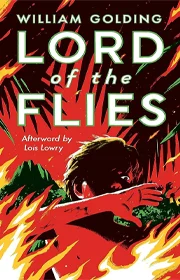
“Lord of the Flies” is a gripping tale of a group of boys stranded on a deserted island after a plane crash. As they attempt to establish order and create a society, the story unfolds into a chilling exploration of human nature. Struggling with the balance between civilization and primal instincts, the boys grapple with fear, power struggles, and the fragility of morality. The narrative builds tension as the island descends into chaos, revealing profound insights into the darker facets of human behavior. William Golding’s masterpiece delves into the complexities of societal structures and the inherent capacity for both good and evil within us all.
Read Lord of the Flies Flipbook:
Listen to Lord of the Flies Audiobook:
Title: Lord of the Flies
Author: William Golding
Genre: Allegorical novel, Survival fiction
Publication Date: 1954
Setting: Deserted tropical island
Plot: A group of boys stranded on an uninhabited island tries to govern themselves, but chaos ensues as their primal instincts take over.
Themes: Civilization vs. savagery, the loss of innocence, the inherent evil in human nature
Characters: Ralph, Piggy, Jack, Simon, and other boys stranded on the island
Symbolism: The conch shell, the beast, the Lord of the Flies
Impact: A classic in modern literature, exploring the darker aspects of human behavior and societal structures.